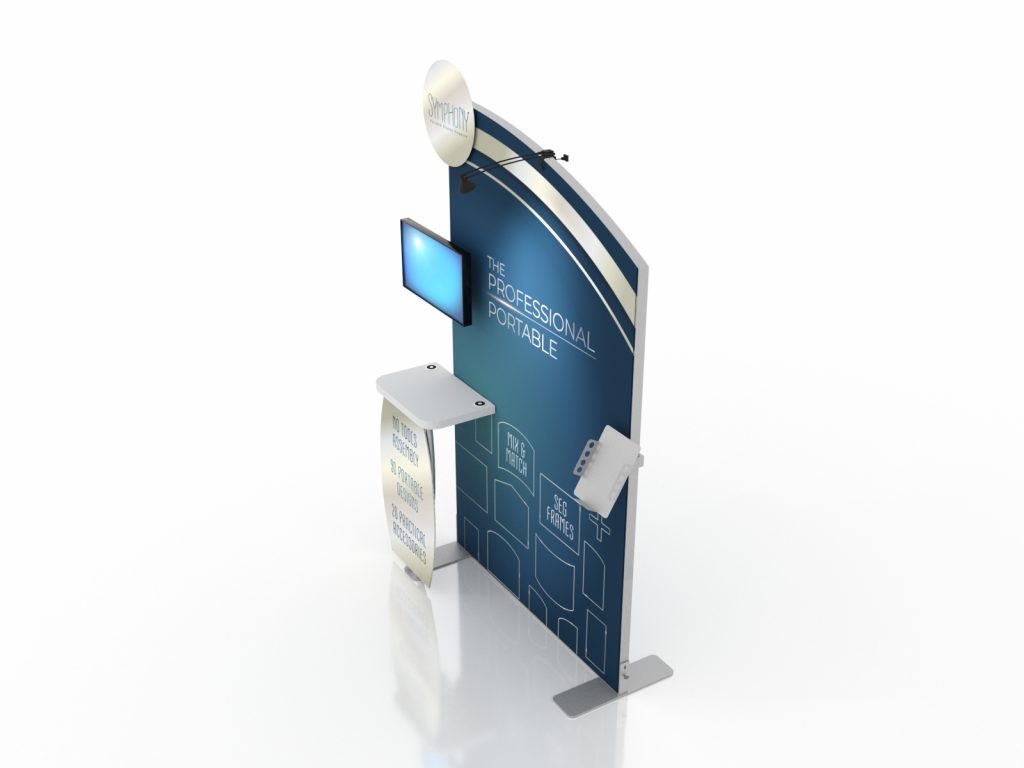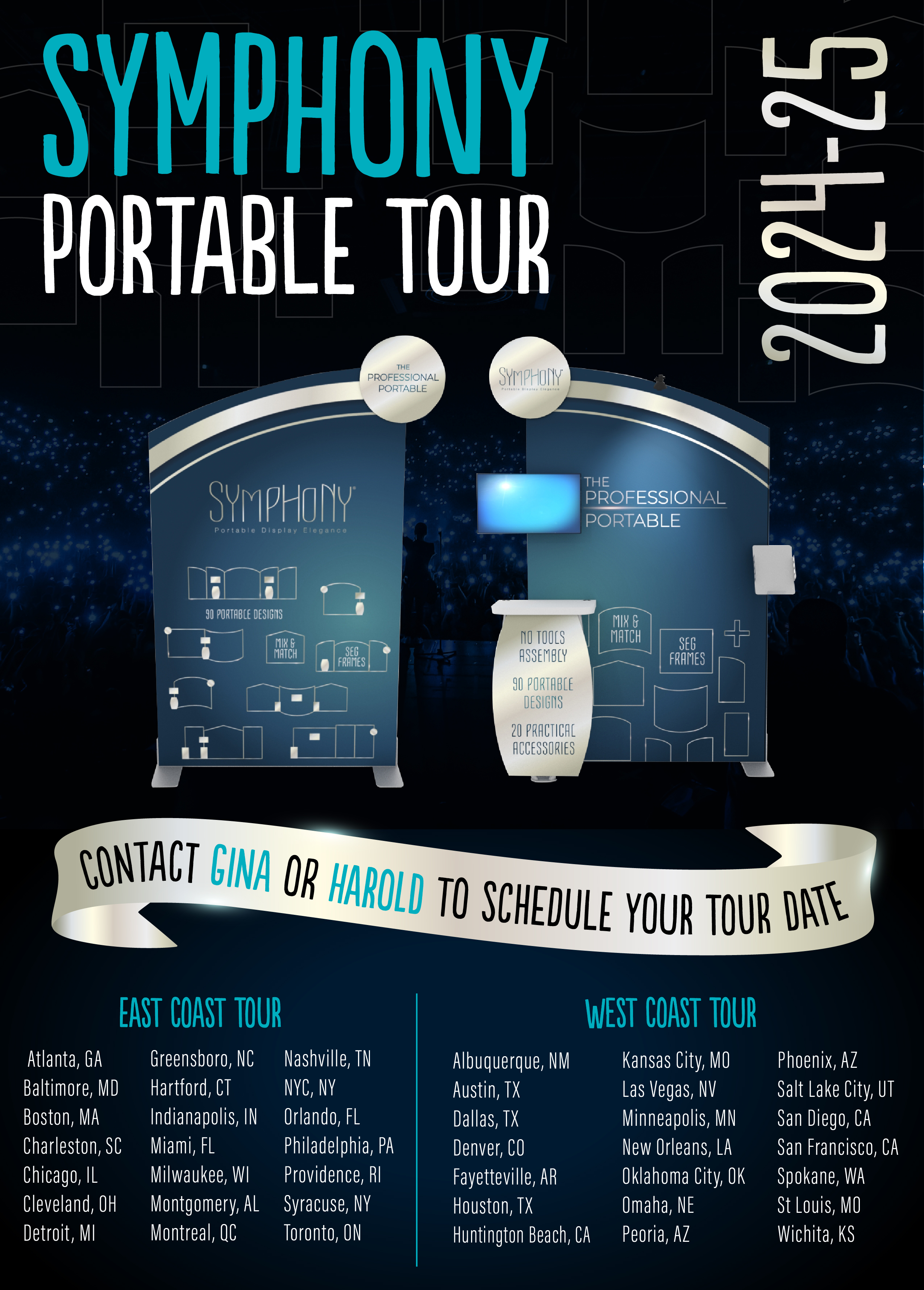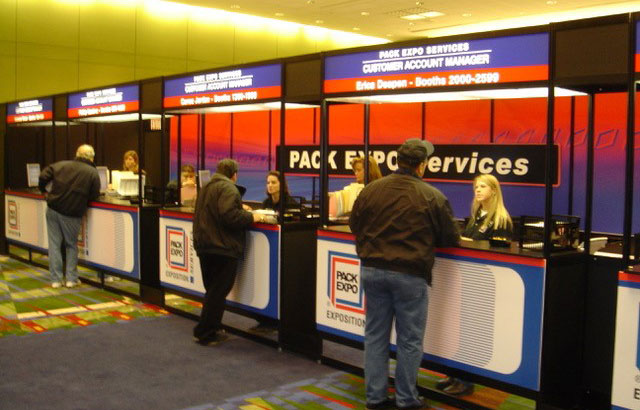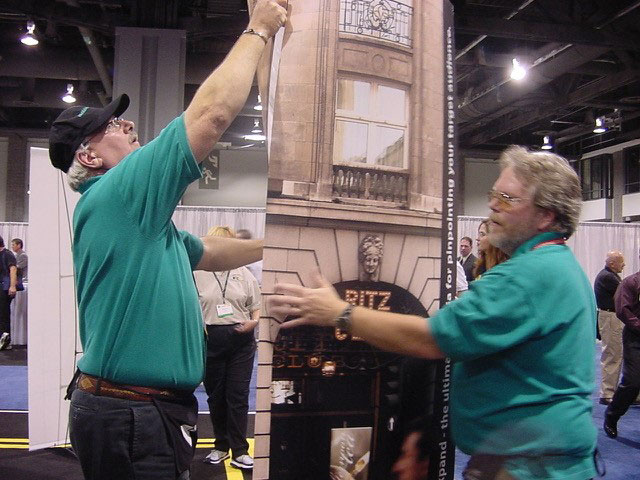
No one starts the exhibit design process with the goal of building an “OK” trade show booth. You want the best trade show booth possible. So, how do you achieve that goal whether you’re in a 10 x 10 inline space or a 40 x 60 island?
The secret to designing an award-winning custom trade show booth isn’t complicated. A healthy budget helps, which shouldn’t be surprising. But, all too often, complacent exhibitors with large budgets are no more successful at a trade show than energized exhibitors who have a targeted, well-executed strategy. In other words, the exhibit is merely one component, albeit an important one, of a successful trade show marketing program.
Let’s explore how you can create one of the best trade show booths ever!
What Sets Apart the Best Trade Show Booths?
According to Matt Kleinrock from Rockway Exhibits, “A well-designed booth guarantees you nothing other than people telling you they like your booth. The booth should tell a story, deliver a message, or make a statement. The “secret sauce” to exhibition success is a well-designed booth rooted in goals, objectives, and a strategy to carry those out through customer engagement.”
Probably the most basic, yet essential question to ask is, “Why do you want to exhibit at this show?” After all, there are hundreds of ways to spend your marketing dollars. In the process of answering that question, consider the following: What do you want to achieve at the show? Is it lead generation, brand awareness, product launch, or relationship building?
At the same time, conduct research on the show. Understand the audience demographics, who attends and who exhibits, and finally, if you have the right product or services for this audience. Once you’ve done your research AND created goals, a strategy, and a budget, then it’s time to consider the trade show booth design.
Here are some essential elements of the best trade show booths:
Branding:
- PROMINENT BRANDING: Make sure attendees can easily identify your brand from a distance.
- CONSISTENT GRAPHIC DESIGN: Maintain a cohesive visual identity that reflects your brand.
Visuals:
- ATTRACTIVE GRAPHICS: Use high-quality images and graphics to grab attention and showcase your products or services.
- CLEAR MESSAGING: Keep your text concise and easy to understand.
Functionality:
- BOOTH SIZE: It should be large enough to accommodate attendees and showcase your offerings, but not so big that it feels empty.
- SMART USE OF SPACE: Create an easy flow for visitors to navigate your booth.
- LIGHTING: Strategic use of lighting can highlight key products and create a desired ambiance.
Engagement:
- INTERACTIVE ELEMENTS: Consider incorporating interactive displays, demos, or contests to engage visitors.
- PROMOTIONAL MATERIALS: Offer brochures, flyers, or business cards for attendees to take with them.
- TECHNOLOGY: Use tablets, screens, or other digital tools to showcase your products or services in an interactive way.
- PROMOS & CONTESTS: Consider including product samples, giveaways, or contests to attract and incentivize visitors.
Essential Elements of the Best Trade Show Displays
Often, the conversation about trade show design skips one of the most important elements of what differentiates a good display from “the very best trade show booths.” The audience. To truly resonate with an audience at a trade show, a display needs to go beyond just basic elements. Here’s how to craft a display that speaks to them:
Know Your Audience:
- Research: Before designing, understand the demographics and interests of the typical attendee. What are their pain points? What kind of information are they seeking?
- Tailor Your Message: Use language and visuals that resonate with their interests.
Focus on Needs, not Features:
- Benefit-driven Messaging: Don’t just list features of your product or service. Explain how it solves their problems and improves their lives.
Appeal to the Senses:
- Visuals: Use high-quality images, videos, or product demonstrations to grab attention and showcase your offerings in action.
- Interactive Elements: Incorporate touchscreens, demos, or games to engage visitors and make the experience memorable.
Create a Welcoming Environment:
- Open and Inviting Layout: Design a booth that’s easy to navigate and encourages people to come in.
- Friendly and Knowledgeable: Have enthusiastic staff members who can answer questions and make visitors feel comfortable.
Showcasing 2024’s Best Trade Show Booth Designs
The 10 x 20 inline was designed for the Black Hat USA trade show. The exhibitor wanted a memorable and welcoming exhibit that invited conversation, not product pitches. The mid-century approach with modern touches included teak slat accents set against LED lightbox graphics.
Even a modest 10 x 10 design can shine. This booth was designed for the RMA Securities Finance and Collateral Management – Risk Management Association Show. The company’s premium brand was projected through the use of highly textured materials including a raised tile floor, wood-grain laminated, 3D signage, and a reception counter with accent lighting.
Designed for the American Organization for Nursing Leadership Conference, this 10 x 20 exhibit simulates an environmental ecosystem using living walls and lightboxes. The natural theme extends to the curved wood grain panels and graphics with leaf venation patterns. To facilitate presentations, the display includes 50 in. monitors.
This larger 30 x 60 island occupied the largest exhibit space at the Compost Conference trade show. Positioned near the exhibit hall entrance, the booth attracted attention not only from attendees entering the show hall, but the large hanging signs ensured maximum visibility throughout the venue. The exhibitor demonstrated their services via interactive screens, a video wall, and an onsite composting machine.
Having a presence at a trade show is often a combination of size, graphics, and the right accessories. This 30 x 30 island, which debuted at the International Council of Shopping Centers, featured a large video wall, monitors, backlit graphics, and 3D logos, to showcase the high-energy nature of this brand.
The Association of College and Research Libraries Show was the site for this 20 x 20 island exhibit. The company wanted a clean, modern aesthetic reminiscent of a library interior. The light wood tones, white textured furniture, blue backlit graphics, and pendant lights were a perfect match for the intended audience.
This 20 x 20 design debuted at the American Society of Association Executives. The exhibitor wanted to present a multi-sensory experience of Portland showcasing its vibrant culture, arts, food, bicycling, festivals, and nightlife. Replica, iconic signs gave the design an iconic Portland vibe.
At Cisco LIVE, the exhibitor’s primary objective was to engage with current clients in a 20 x 30 booth with clean lines and clear branding. The design emphasized their extensive product range using multiple interactive screens, which also served to demo their software and as digital signage.
Practical Lessons from a Designer and Builder of Trade Show Booths
For over 30 years, Classic Exhibits has been designing and building trade show exhibits. Our customers are custom houses, portable/modular distributors, event companies, and marketing agencies. They work directly with clients on both the design of the exhibit and their trade show marketing strategy. We serve as a private-label manufacturer for our customers.
As you can imagine, we’ve handled a wide range of projects, clients, timelines, and expectations. We’ve seen flawless projects from start to finish. We’ve also experienced projects with some unexpected bumps along the way. How can you avoid those bumps? Here are some practical lessons we’ve learned over the years as a designer and builder of trade show exhibits.
- Define Your Goals and Strategy: Trade shows are expensive, really expensive. Successful exhibitors know precisely what they want to achieve and have a game plan for meeting or exceeding those objectives. Without goals and a strategy, you’re basically throwing darts at a dartboard while wearing a blindfold.
- Create a Timeline: Designing and building an exhibit, including designing and printing graphics takes time. Think weeks and months. Not days. Rush decisions invariably lead to mistakes, compromises, and added (and avoidable) expenses.
- Ensure Internal Cooperation and Buy-in: Often, companies assign their trade show project to one person or one department, which is smart since someone or some department should be in charge of the project. However, other departments shouldn’t have input and buy-in. We’ve seen smooth projects go off the tracks when Sales, Engineering, or even Senior Management gets involved late in the process, even as late as the staging of the exhibit.
- Partner with an Exhibit Professional: Yes, you can purchase a trade show display online: point, click, and pay. Trade show marketing, however, is more than the display, and trade show professionals can guide you through the exhibition industry maze. More importantly, they’ll shorten your learning curve and save you money both in the short- and long-term.
- Avoid the Breadcrumb Approach: Designing and building an exhibit requires hundreds of details, like laminate colors, crating requirements, lighting specifications, graphic designs, etc. Sharing that information in breadcrumbs, rather than in a loaf of bread (to complete the metaphor) makes it challenging to document and track. As a result, details may fall through the cracks and mistakes may happen.
- Ask Questions and Expect Answers: You’re the client. You have a right to ask questions about your project and expect clear and timely answers. In fact, the project can’t be successful unless you are curious and engaged.
- Deciding Between a Purchase vs. Rental Exhibit: Both have pros and cons. Your exhibit professional can explain why one might be a better choice over the other for your unique situation or for a particular show. But, it doesn’t have to be an either/or decision. Many exhibitors are doing both and there’s a growing trend to mix and match purchases with rental components.
- Learn from Your Mistakes: There’s no perfect strategy or perfect trade show exhibit. You’re going to make a mistake or two, no matter how many times you’ve planned and participated in a trade show. What you learn is important, but how you use that knowledge in the future will make you an invaluable resource to your company.
Classic Exhibits: Building the Best Trade Show Booths Since 1993
Trade show marketing takes time to learn, including how to design the best trade show booth. That’s why having an expert available to your team is so important.
For 30 years, Classic Exhibits has been designing and building creative custom solutions for our Distributor Partners and their clients. As North America’s largest private-label exhibit manufacturer, we have the unmatched capability, capacity, and creativity to create 3D projects ranging from 10 x 10 inline displays to 60 x 80 double-deck islands. Find success on the trade show floor with an exhibit that reflects your marketing message. For more information, see www.classicexhibits.com and explore Exhibit Design Search or request a meeting with a Classic Distributor Partner.
















